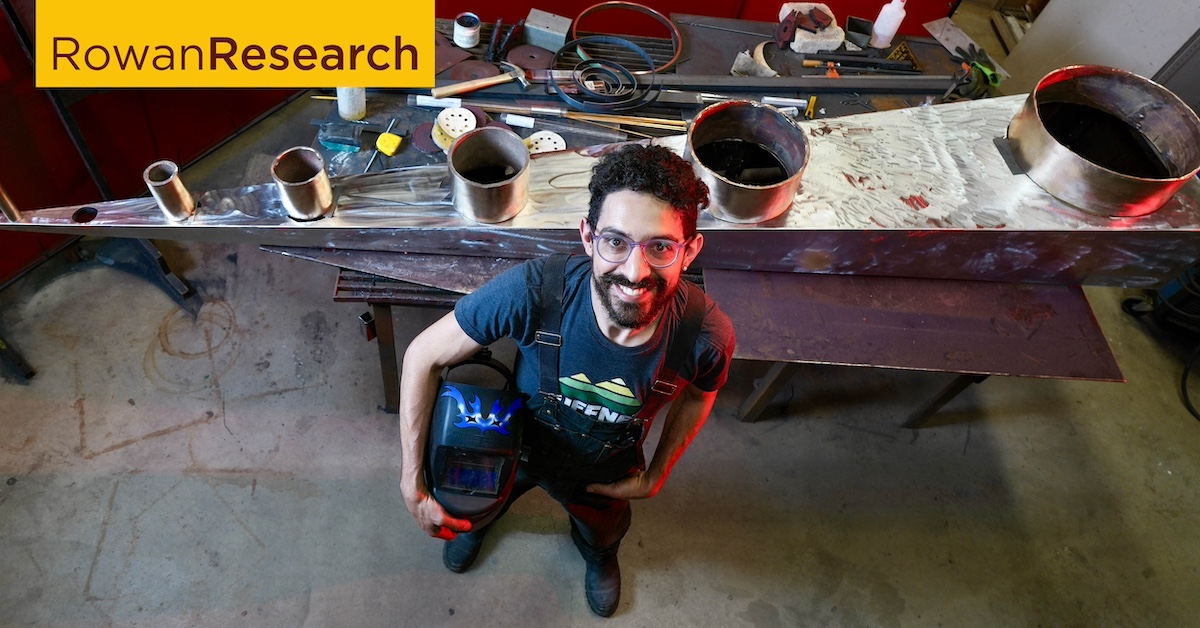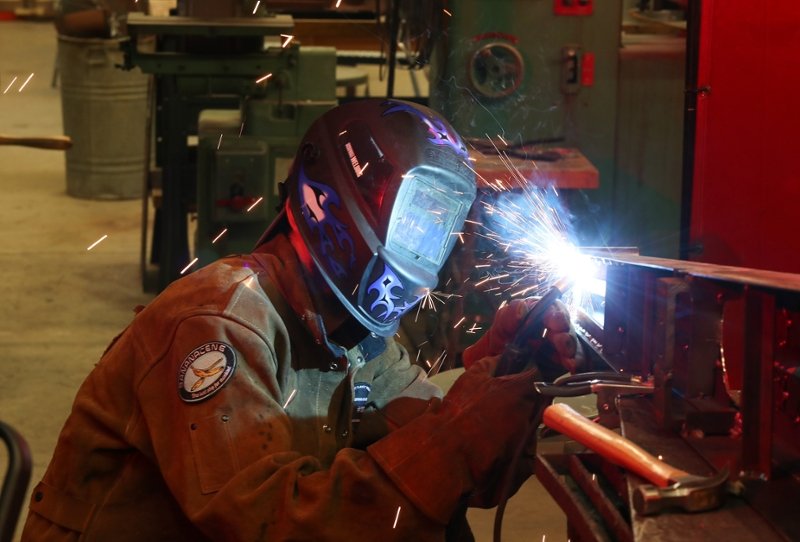The art of research
The art of research

The traditional view holds that art and science live in separate realms.
Sam Horowitz, an assistant professor in Rowan's College of the Arts doesn’t hold that view.
Horowitz, who starts his second full year of teaching at Rowan University in the fall, sees art, or at least the components of art, everywhere. From ancient stalactites that seemingly “grow” in the dank dark of caves (and which he hopes to reproduce in a public art project on campus), to found objects ripe for repurposing, Horowitz finds inspiration for his art, much of it grounded in science and math, everywhere.
In fact, Horowitz is so committed to the math and science that inform his work that he has rulers tattooed on his forearms, one metric, one imperial, just in case he needs a measurement.
Hard at work in early June on a 12-foot-long steel sculpture dubbed “Forced Perspective” for the North Bennington Outdoor Sculpture Show in his home state of Vermont, Horowitz’s artistic vision for the piece was deeply informed by math and science, from precise measurements needed to cut and assemble it, to a knowledge of welding to hold it together.
 “Perspective is a universal law that describes how we see things,” he said from Rowan’s sculpture studio in Westby Hall. “In ‘Forced Perspective,’ six-inch sections of bronze centered within concrete pillars will appear to have different lengths depending on the angle it’s viewed from.”
“Perspective is a universal law that describes how we see things,” he said from Rowan’s sculpture studio in Westby Hall. “In ‘Forced Perspective,’ six-inch sections of bronze centered within concrete pillars will appear to have different lengths depending on the angle it’s viewed from.”Horowitz, who has also produced complete works from found items, encourages students to likewise create art from free or inexpensive materials that they can find, from scrap yards to thrift stores.
As for creating a campus art project with stalactites, mineral formations that actually “grow” down as they might in a cave or under a bridge, Horowitz said it’s in the works.
“The idea would call attention to a natural phenomenon, but in the context of a form that’s more recognizably human-made,” he said. “We’d be modeling art from nature.”
Rowan University researchers are passionate about what they do. Find more at Meet Our Researchers.